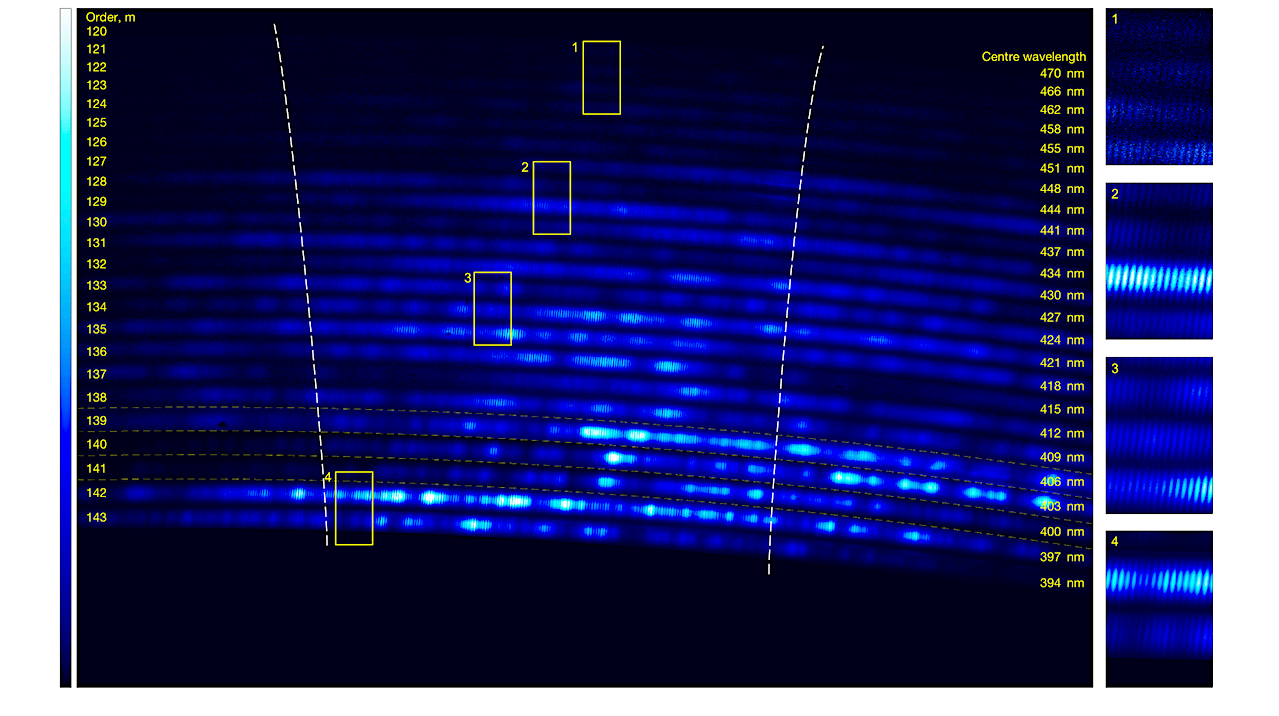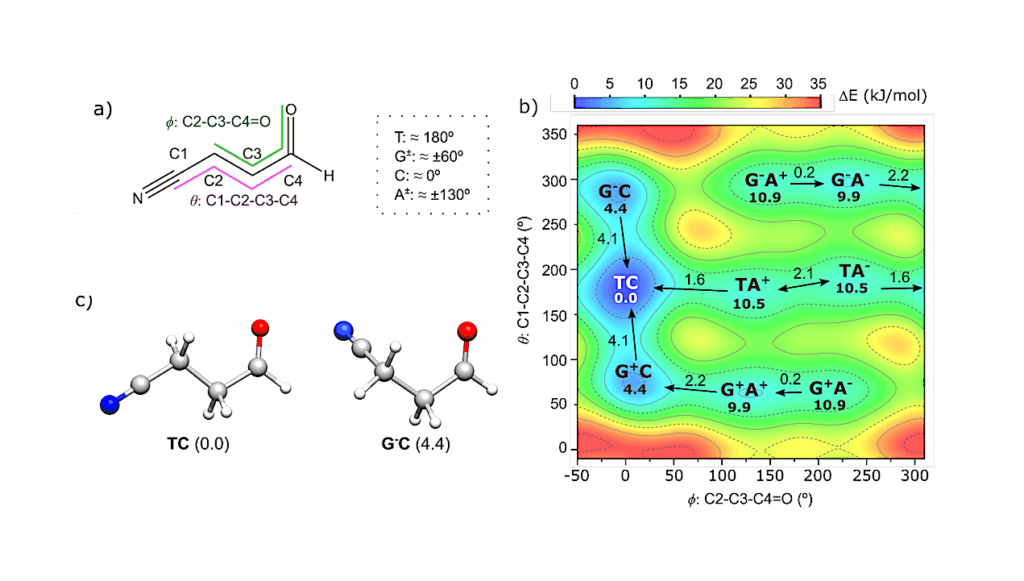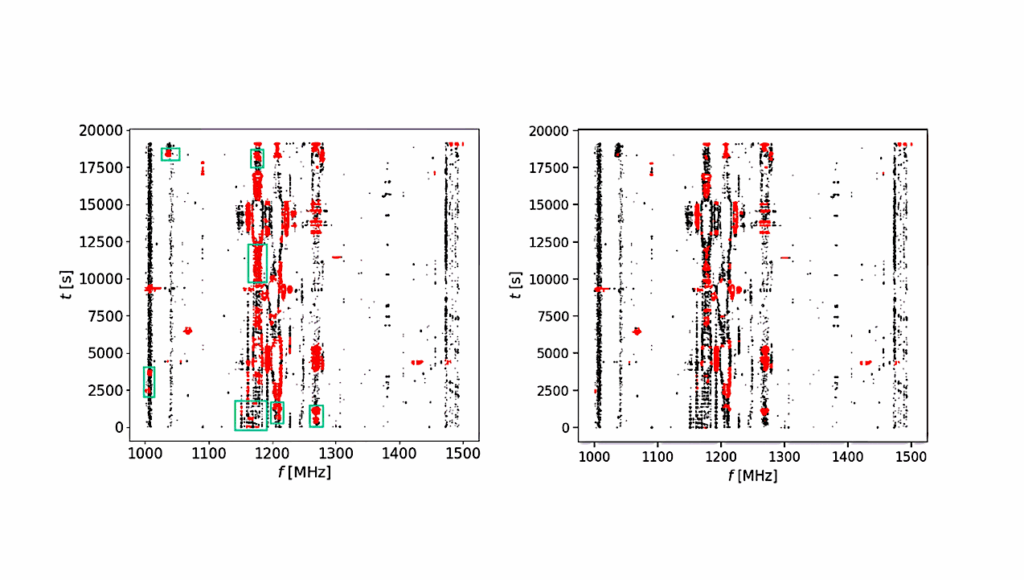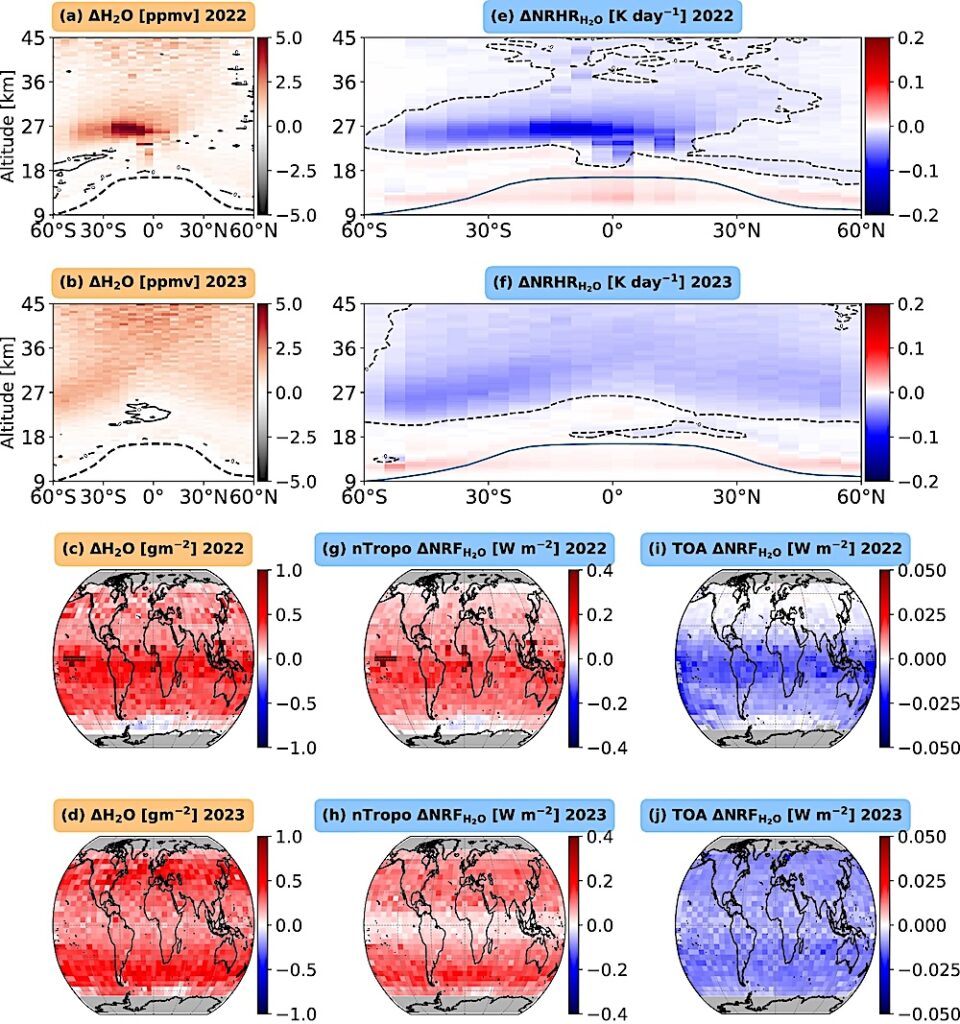Continuous Ultraviolet To Blue-Green Astrocomb

The characterization of Earth-like exoplanets and precision tests of cosmological models using next-generation telescopes such as the ELT will demand precise calibration of astrophysical spectrographs in the visible region, where stellar absorption lines are most abundant.
Astrocombs–lasers providing a broadband sequence of ultra-narrow, drift-free, regularly spaced optical frequencies on a multi-GHz grid–promise an atomically-traceable, versatile calibration scale, but their realization is challenging because of the need for ultra-broadband frequency conversion of mode-locked infrared lasers into the blue-green region.
Here, we introduce a new concept achieving a broad, continuous spectrum by combining second-harmonic generation and sum-frequency-mixing in an aperiodically-poled MgO:PPLN waveguide to generate gap-free 390-520 nm light from a 1 GHz Ti:sapphire laser frequency comb. We lock a low-dispersion Fabry-Perot etalon to extract a sub-comb of bandwidth from 392-472 nm with a spacing of 30 GHz, visualizing the thousands of resulting comb modes on a high resolution cross-dispersion spectrograph.
Complementary experimental data and simulations demonstrate the effectiveness of the approach for eliminating the spectral gaps present in second-harmonic-only conversion, in which weaker fundamental frequencies are suppressed by the quadratic {chi}^((2)) nonlinearity. Requiring only ~100 pJ pulse energies, our concept establishes a practical new route to broadband UV-visible generation at GHz repetition rates.
Yuk Shan Cheng, Kamalesh Dadi, Toby Mitchell, Samantha Thompson, Nikolai Piskunov, Lewis D. Wright, Corin B. E. Gawith, Richard A. McCracken, Derryck T. Reid
Comments: 14 pages; 4 figures
Subjects: Optics (physics.optics); Instrumentation and Methods for Astrophysics (astro-ph.IM)
Cite as: arXiv:2306.13533 [physics.optics] (or arXiv:2306.13533v1 [physics.optics] for this version)
Submission history
From: Derryck Reid
[v1] Fri, 23 Jun 2023 14:54:56 UTC (17,106 KB)
https://arxiv.org/abs/2306.13533
Astrobiology








